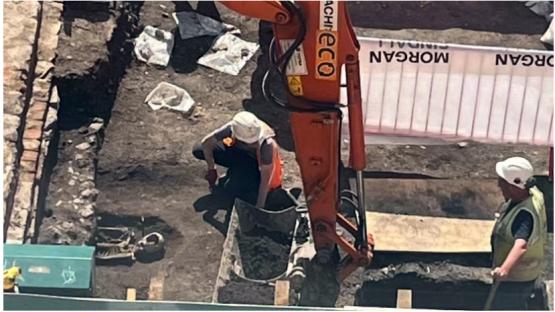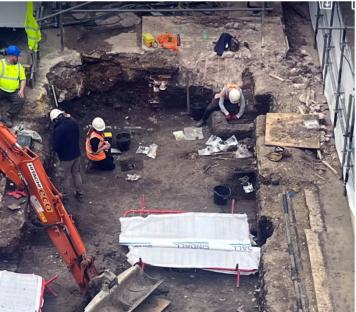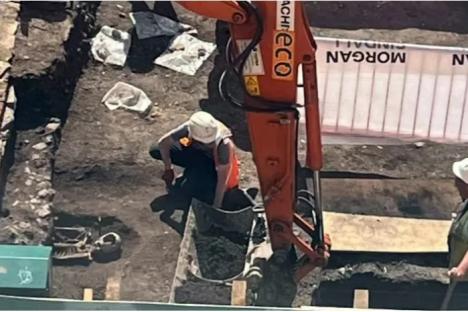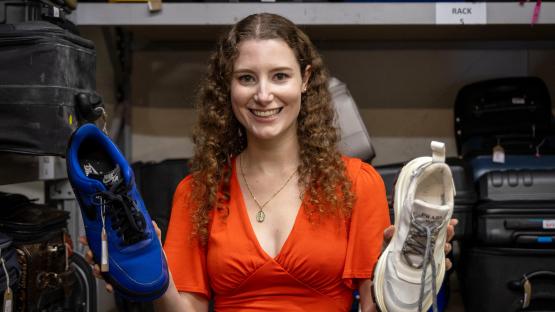ARCHAEOLOGISTS have uncovered a grisly treasure trove dating back 300 years hidden beneath an abandoned Debenhams.
The centuries old treasure was found at the former store, located in Gloucester, during its redevelopment.



It lay beside more than 300 skeletons, which were also excavated, and archaeologists say the area used to be the north-eastern quadrant of a Roman town.
The remains were discovered in brick-built vaults and a crypt.
The biggest discovery, however, was an eight-metre-long footing of the Western elevation and porch from the St Aldate’s Church.
Experts believe it was built in around 1750 and named after the bishop of Gloucester.
Historians largely agree the medieval St Aldate’s Church was destroyed in the mid-17th century after the English Civil War.
In the building's basement, where the menswear department used to be, Roman pottery and a cobbled stone surface were discovered.
These are understood to date all the way back to the second century.
Substantial fragments of a reticulated tracery church window were also unearthed and dated to the early 14th century.
Archeologists also discovered pillars, understood to be from the 1700s, in the abandoned Debenhams delivery area.
Other quirky finds included parts of a tobacco pipe and a post-Medieval wine bottle.
Cliff Bateman, Cotswold Archaeology’s senior project officer at the City Campus site, previously said: “The site as a whole has the potential to increase public knowledge of the Roman, medieval and post-medieval development of this part of Gloucester.
“Gloucester is such a significant place in terms of archaeological study - it’s unbelievable Underneath where we’ve found the 18th century church and medieval and post-medieval burials, there will be Roman buildings in situ.
“Every time we work in Gloucester, we make new discoveries - it’s a massively important place.”;
This comes as after a variety of centuries-old artefacts were discovered using a metal detector in a Yorkshire field this week.
The “once-in-a-lifetime” hoard could lead to a revaluation of the wealth and status of the elite living in northern Britain 2,000 years ago.
The Iron Age items, known as the Melsonby Hoard after the town where they were discovered, lay untouched in two ditches since the middle of the 1st century.
This haul comprises of 800 items, including partial remains of wagons, ceremonial spears, and pony harnesses.
The discovery was made in 2021 by detectorist Peter Heads who reported the location to the proper authorities.
Experts say this could be one of the most important UK findings ever, and will need careful study for years.
Elsewhere, a huge “fortune”; of 400-year-old treasure was found crammed inside the leg of a statue in a church.
Restoration workers found four “bulging” bags of golden coins concealed inside a stone cavity when they were working on a famous Gothic church in Germany .
Historians think the bounty was hidden from Swedish looters who frequently plundered the region during the Thirty Years' War in the 17th century.
Ulf Dräger, curator and head of the State Coin Cabinet in Germany, told Live Science the discovery was the latest chapter in an “incredibly story”;.
The trove of 816 coins was first uncovered at St Andrews Church in Eisleben, central-east Germany, in 2022, but kept under wraps until recently.
The church is famous for being the place where Martin Luther , a significant figure in the Protestant reformation, delivered his last sermons in 1546.








